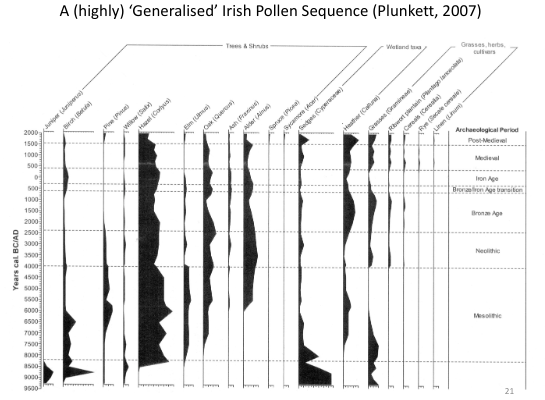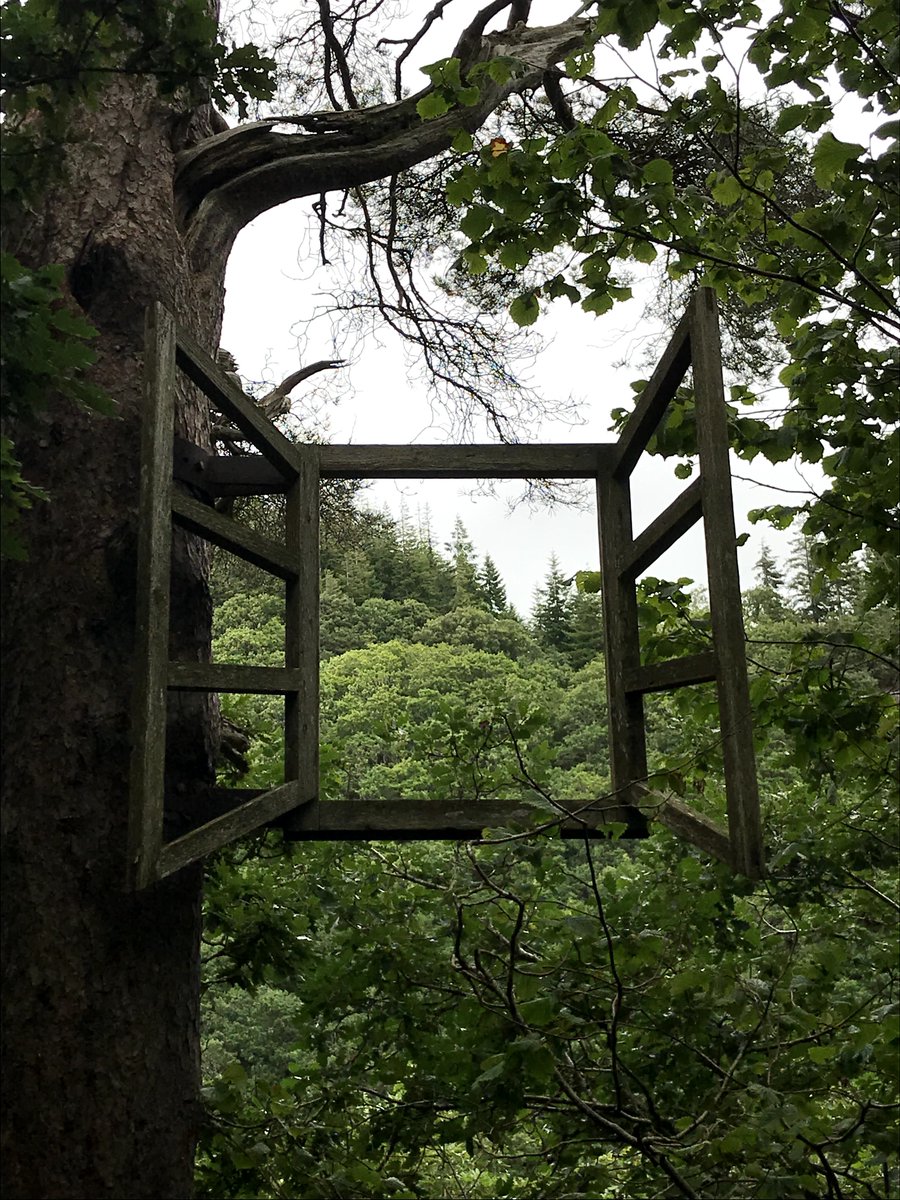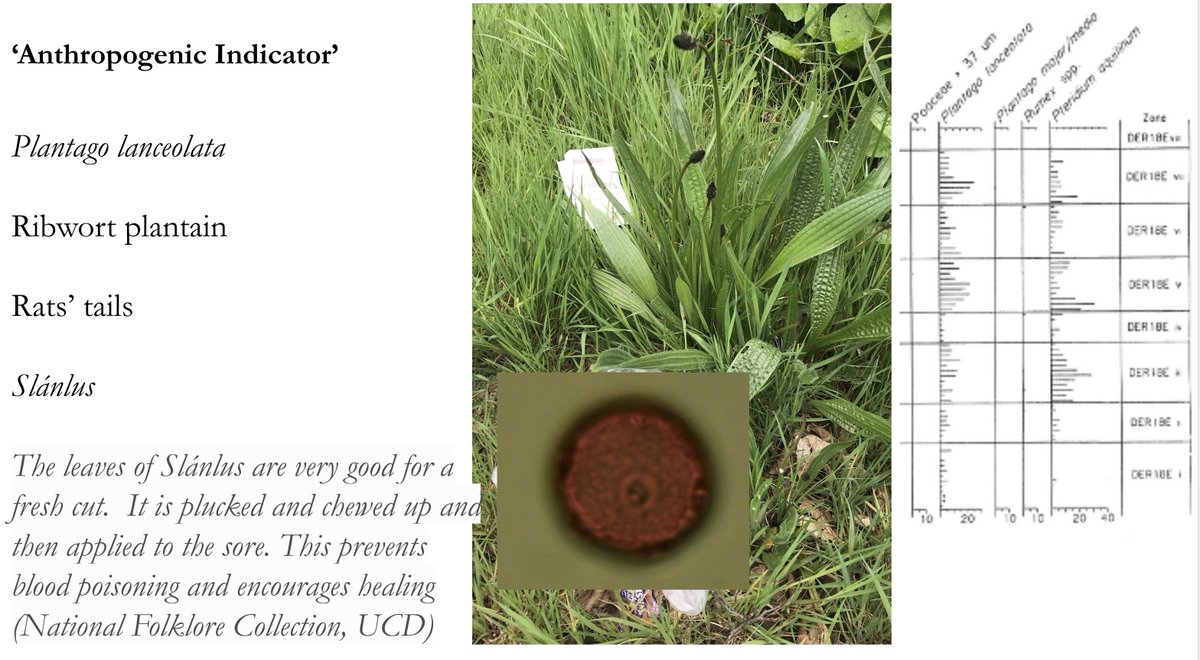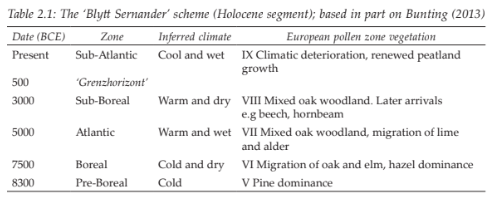1/Hi all! This afternoon we look (selectively) at what pollen records, tell us about long term changes, from the end of the last Glaciation. How has climate, humans+related processes shaped the 🇮🇪 vegetation over thousands of years? (Nick Miller, From Cogan's Shed, 2004) 

2/Difficult to summarise 1000s yrs in tweets! Image by Gill Plunkett @QUBelfast does good jobNB. highly generalised, much spatial variation across country; Key points: development of woodland as climate warms start of #Holocene hazel dominant, oak, elm, later alder, how dense? 

3/Closed canopy? But NB1 Concept of 'Climax' woodland largely discredited; : 'openess' is under-represented in #pollen records! NB2; #ClimateChange driving some changes; other processes inc. soil development. When does human activity impact? Now that's a good qu! 

4/Clearest evidence of woodland clearance c. 3800 BC, rises in herbs/grasses, falls in trees/shrubs. Much debated 'Elm Decline' around this time. Opening up of woodland by #Neolithic peoples; NB. Not 'slash+burn' in strictest definition! 

5/Stone axes effective tools to chop down trees! Other techs. prob 'ring barking', fire poss. used to clear drier scrub, burn dead vegetation to new growth. Most clearance restricted, small arable plots+pastoral, prob also driving changes in floral #Biodiversity
6/What did these #Neolithic landscapes look like? Hard to envisage, for some nice reconstructions of #archaeological sites in context, see philarm.com/category.aspx?…
7/It wasn't just humans driving changes in vegetation, soils etc., #Climate shifted through time across Ireland/nw Europe, although underlying processes are still debated. Link between vegetation/climate long suspected +formed basis for 'zonation' of #Holocene based on pollen 

8/The Irish landscape is product of millennia of complex, interacting processes, across different chronological/spatial scales. Where is the baseline for 'natural' vegetation? Do we mean 'pre-human' impact? When is that?
9/Mesolithic? As @AerialAndBugs points out, prob small scale impacts on vegetation then. Climate envelope also different. Post 'Sub-Boreal/Sub-Atlantic' (see 7)? Wetter/colder, but vegetation succession/soils already shaped by millennia of human activity!!
10/ ENOUGH ALREADY! We will return to such musings/implications for how we think of, and look to restore/conserve the Irish landscape later. For now I leave you with: The Mickey Mouse of pollen grains, Pinus sylvestris 😉😂 

• • •
Missing some Tweet in this thread? You can try to
force a refresh













